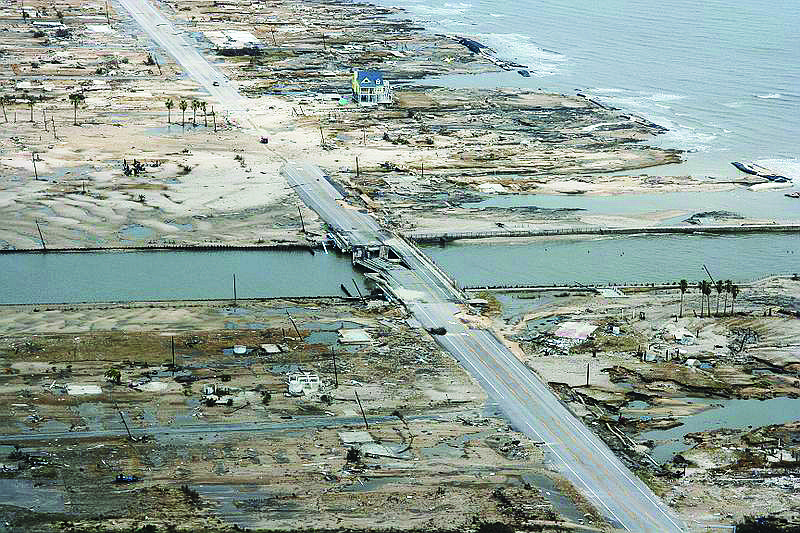- April 23, 2024
-
-
Loading

Loading

For Sarasota County staff tasked with drafting the area’s Post-Disaster Redevelopment Plan, Hurricane Ike is a sobering reminder of the destructive power of hurricanes. It also serves as a case study in how decisions made under “blue sky conditions” can facilitate the path to recovery and normalcy in the wake of a major storm.
On Sept. 13, 2008, Hurricane Ike made landfall as a strong Category 2 storm near the east end of Galveston Island, Texas, which is a low-lying barrier island similar to Siesta, Lido and Longboat keys.
The damage was catastrophic — National Weather Service forecasters warned that whoever didn’t evacuate faced “certain death” from the storm surge.
Ike sent a 10- to 15-foot storm surge into Galveston and parts of the western end of Galveston Bay, and a 20-foot surge over the nearby Bolivar Peninsula. The town of Gilchrist, which sits on a barrier island to the north of Galveston, bore the worst of the storm — Ike’s waves knocked 99.5% of Gilchrist’s 1,000 buildings off of their foundations.
The damage was so devastating that the majority of Gilchrist’s population never returned to rebuild. Of the 1,000 residents before the storm, only 73 had returned to live on the island two years later, according to the 2010 U.S. Census.
“They tried to figure it out after the fact in Galveston,” Sarasota County Coastal Resources Manager Laird Wreford said, referring to redevelopment after Hurricane Ike. "Making planning decisions pre-disaster in a blue-sky situation, to the degree that you can, is far preferable to making those kinds of decisions by the seat of your pants in the midst of chaos and trying to recover."
With less than two months until the beginning of hurricane season, Wreford made the first public presentation of the county’s Post-Disaster Redevelopment Plan (PDRP) to the Siesta Key Association Thursday.
Wreford said Sarasota County has been “very lucky” with major storms, but with two-thirds of Sarasota County’s Gulf coastline considered critically eroded by state standards, he also warned the area is vulnerable to catastrophic damage during a major storm.
Wreford referenced models indicating the county’s barrier islands would be completely flooded by a Category 1 storm. And the storm surge from a Category 5 hurricane could go as far inland as parts of Lakewood Ranch, according to county projections.
While county first-responders and emergency-operations staff focus more on recovery efforts in the immediate aftermath of a storm, county staff developed the PDRP to guide the long-term recovery process.
“This is about what you do after the short-term recovery,” Wreford said. “How do you get back to some semblance of where you were before? How do you retain the basic essence of what Sarasota is and was?”
The plan focuses on initiatives such as streamlining the permitting process in the wake of catastrophic property damage by setting up satellite permitting offices, guiding redevelopment to minimize repeat losses and putting in place policies to facilitate residents returning to their homes.
“It’s about putting people back to work as quickly as you can, getting kids back to school and to have tourism back churning again with the least amount of downtime,” Wreford said. “It could save the community millions of dollars if done properly.”
Work on the PDRP began in 2007, but the project stalled for several years after the 2010 BP oil spill diverted the attention of Sarasota County Coastal Resources staff. A first draft of the plan is set to be unveiled on the Sarasota County website this week.
Public workshops will be held April 29 and April 30 to solicit input from area stakeholders and integrate public comment and opinion into the report’s final draft, which will go before the County Commission June 11.
“Communication is key,” Wreford said. “Progress has been glacial at times … but we're very, very optimistic about being able to move forward.”
Residents interested in learning more about the PDRP can call 861-5000, or visit scgov.net/PDRP/Pages/default.aspx.
Contact Nolan Peterson at [email protected].